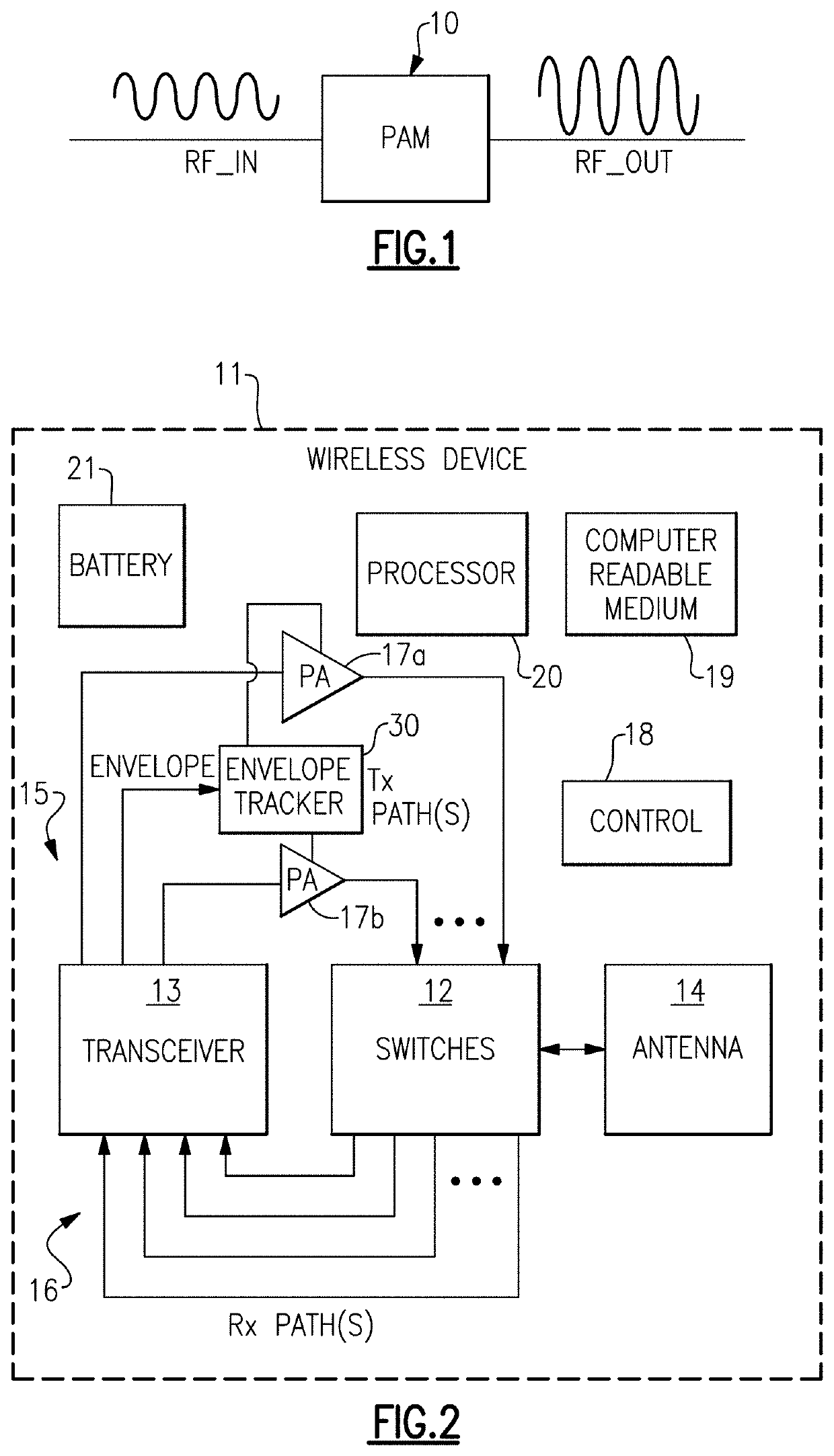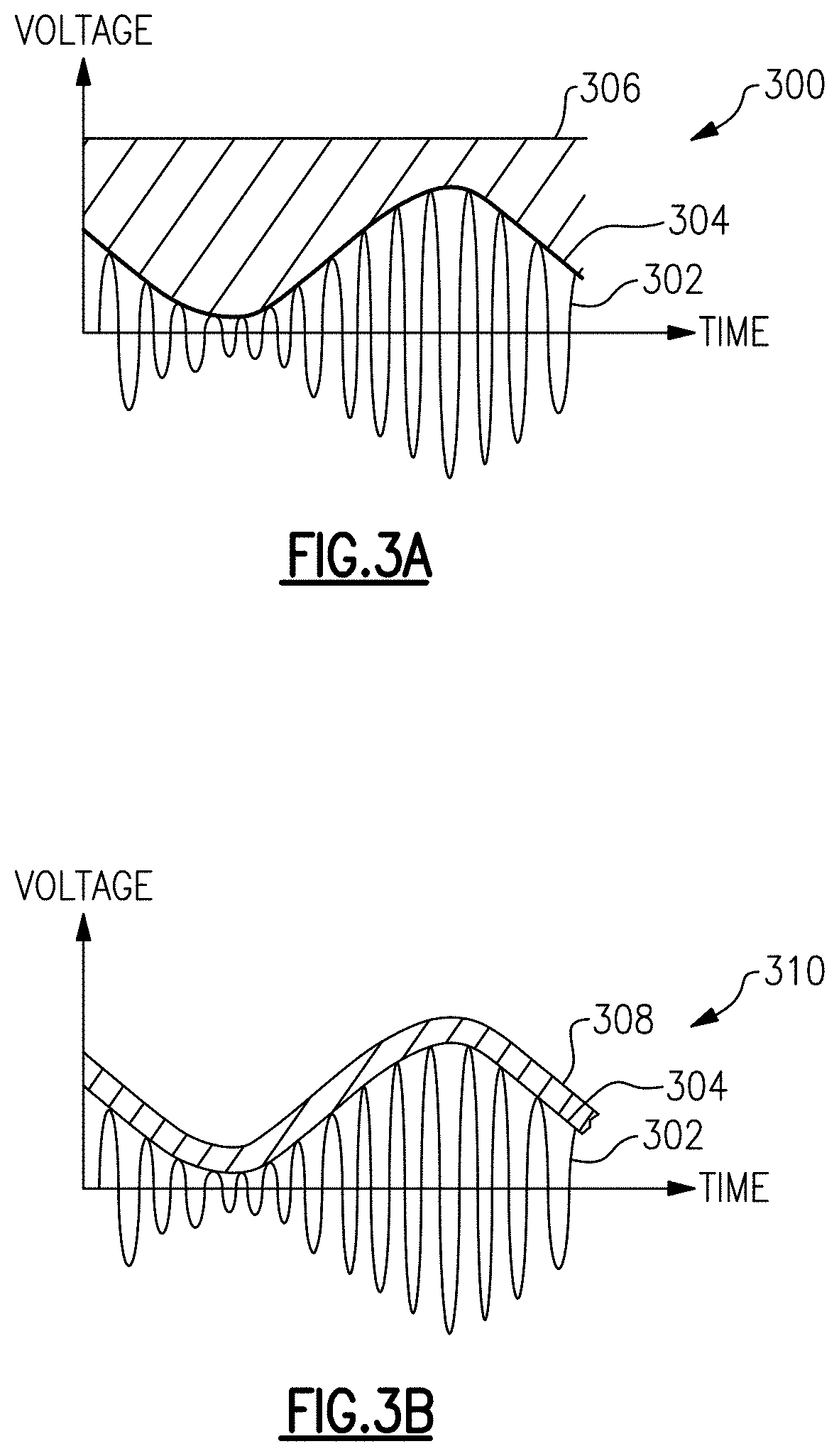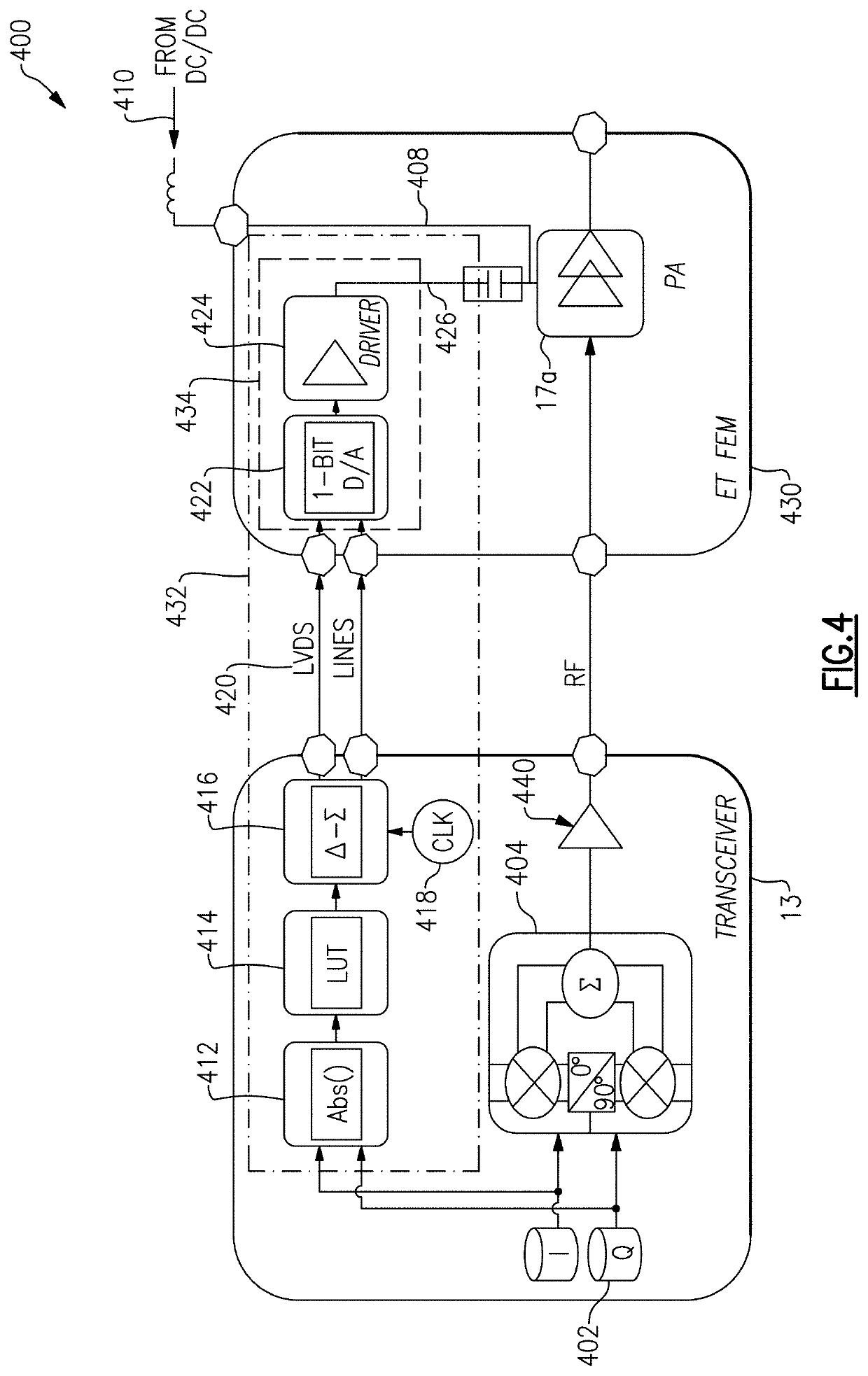Automated envelope tracking system
a tracking system and envelope technology, applied in the direction of amplifier types, amplifiers with semiconductor devices/discharge tubes, amplifiers, etc., can solve the problems of high data rate in mobile and wireless communication devices, power amplifier systems may exhibit relatively poor linearity, etc., to reduce cross-path interference degradation or eliminate the effect of different path lengths
- Summary
- Abstract
- Description
- Claims
- Application Information
AI Technical Summary
Benefits of technology
Problems solved by technology
Method used
Image
Examples
example spectral
Density
[0102]FIG. 11 illustrates a graph 1100 of spectral densities versus frequency. Curve 1102 (thin solid line) is spectral density of an example RF signal amplified through a power amplifier with an ideal envelope tracking supply voltage. Curve 1104 (dotted line) is the spectral density of the same example RF signal amplified through a power amplifier with an envelope tracking signal achievable through a certain embodiment. Line 1106 (thick solid line) shows an example spectral density requirement which may be imposed by a certain communication system or standard. The two spectral densities 1102 and 1104 are not identical in shape. As described above in relation to FIG. 10 above, the differences may be attributed to various sources of error in the envelope tracking system, for example magnitude estimation or measurement error. However, the showing that the achievable spectral density 1104 tracks closely the ideal spectral density 1102 demonstrates that certain embodiments descri...
PUM
 Login to View More
Login to View More Abstract
Description
Claims
Application Information
 Login to View More
Login to View More - R&D
- Intellectual Property
- Life Sciences
- Materials
- Tech Scout
- Unparalleled Data Quality
- Higher Quality Content
- 60% Fewer Hallucinations
Browse by: Latest US Patents, China's latest patents, Technical Efficacy Thesaurus, Application Domain, Technology Topic, Popular Technical Reports.
© 2025 PatSnap. All rights reserved.Legal|Privacy policy|Modern Slavery Act Transparency Statement|Sitemap|About US| Contact US: help@patsnap.com



